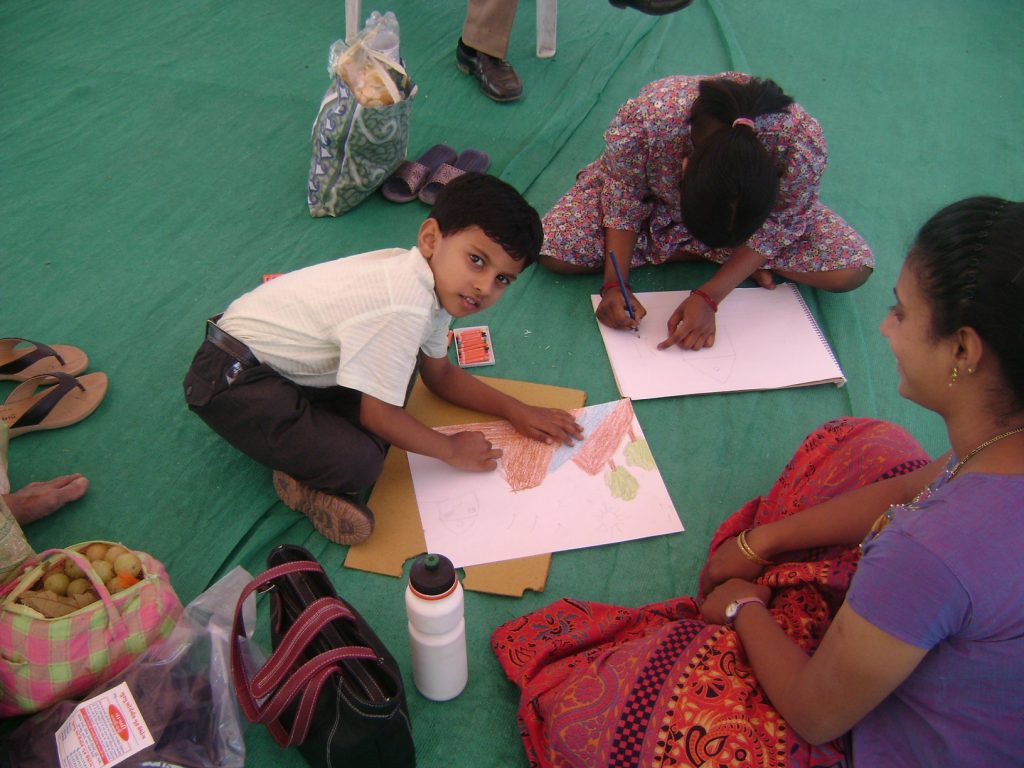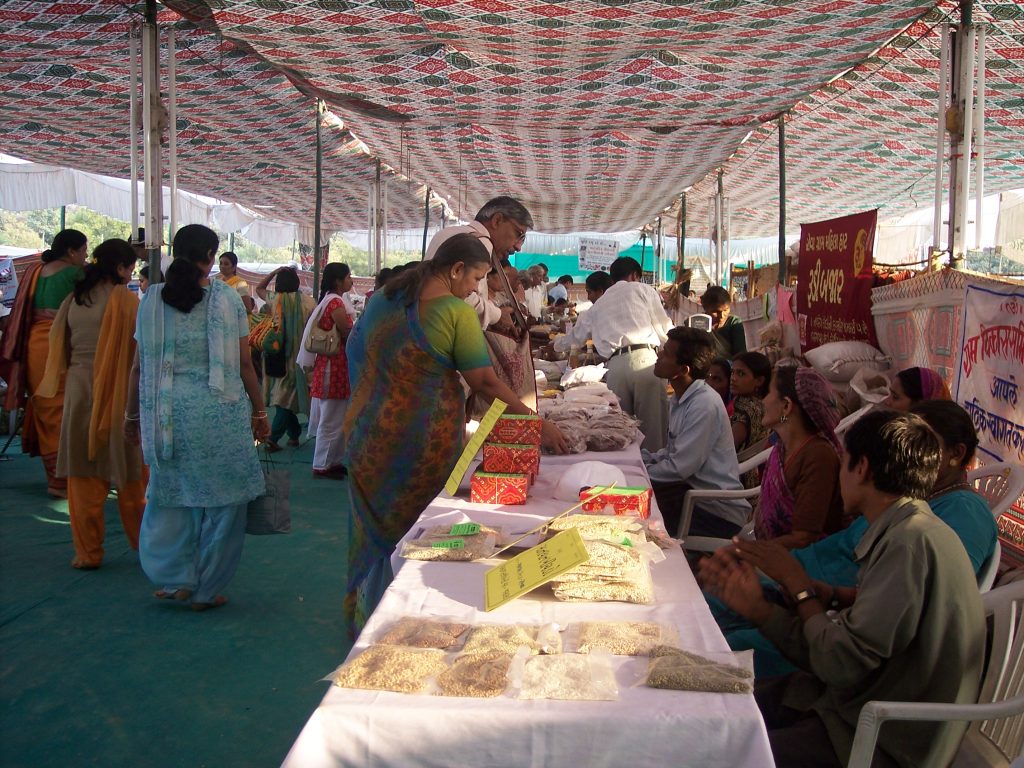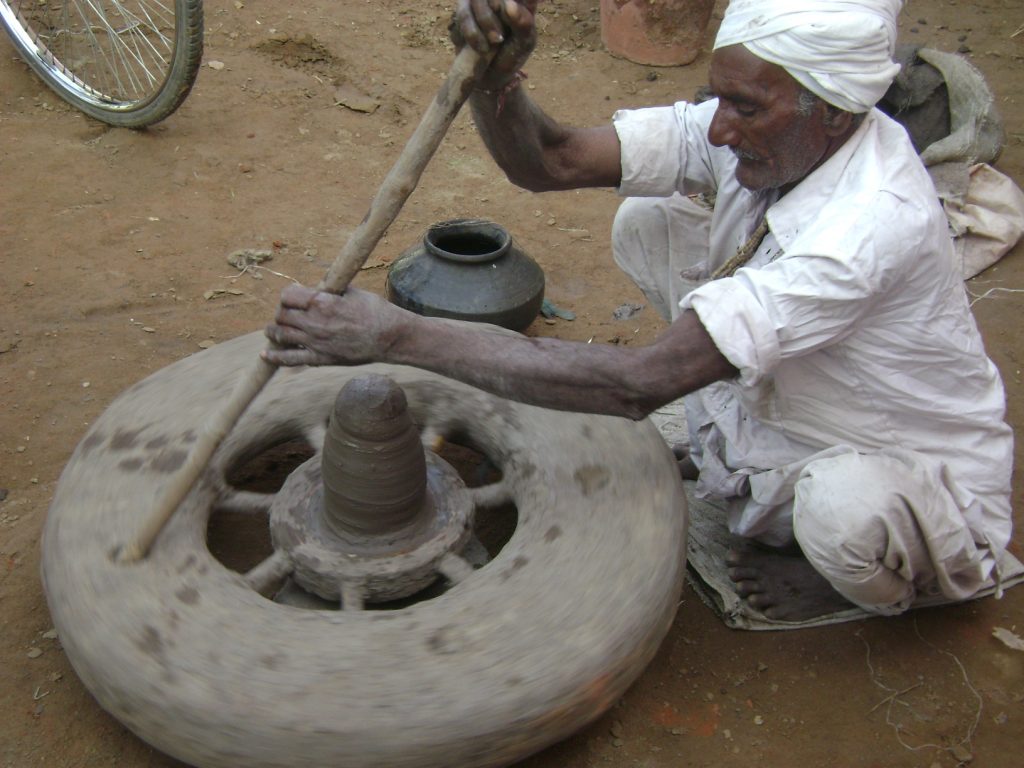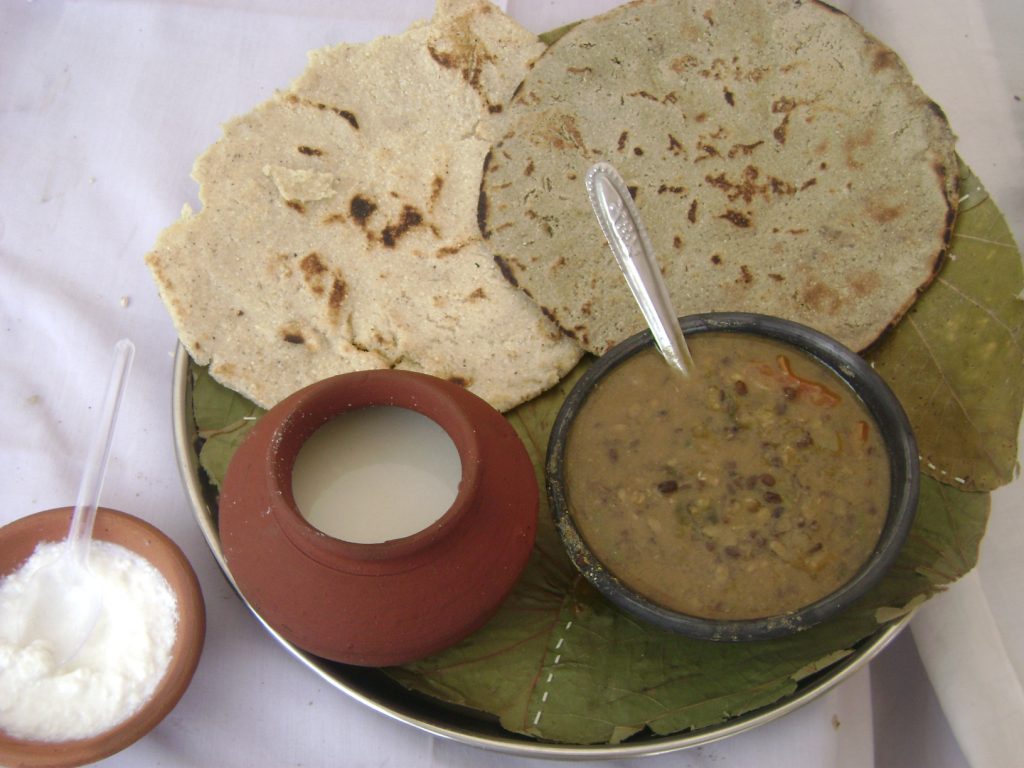5TH TRADITIONAL FOOD FESTIVAL
(1st to 4th December, 2007)
“A cultural milieu to revive the forgotten tastes and hence the forgotten ties!”
Date : 1st to 4th December, 2007
Venue : IIM Campus, Vastrapur, Ahmedabad
Time : 11:00 am to 10:00 pm
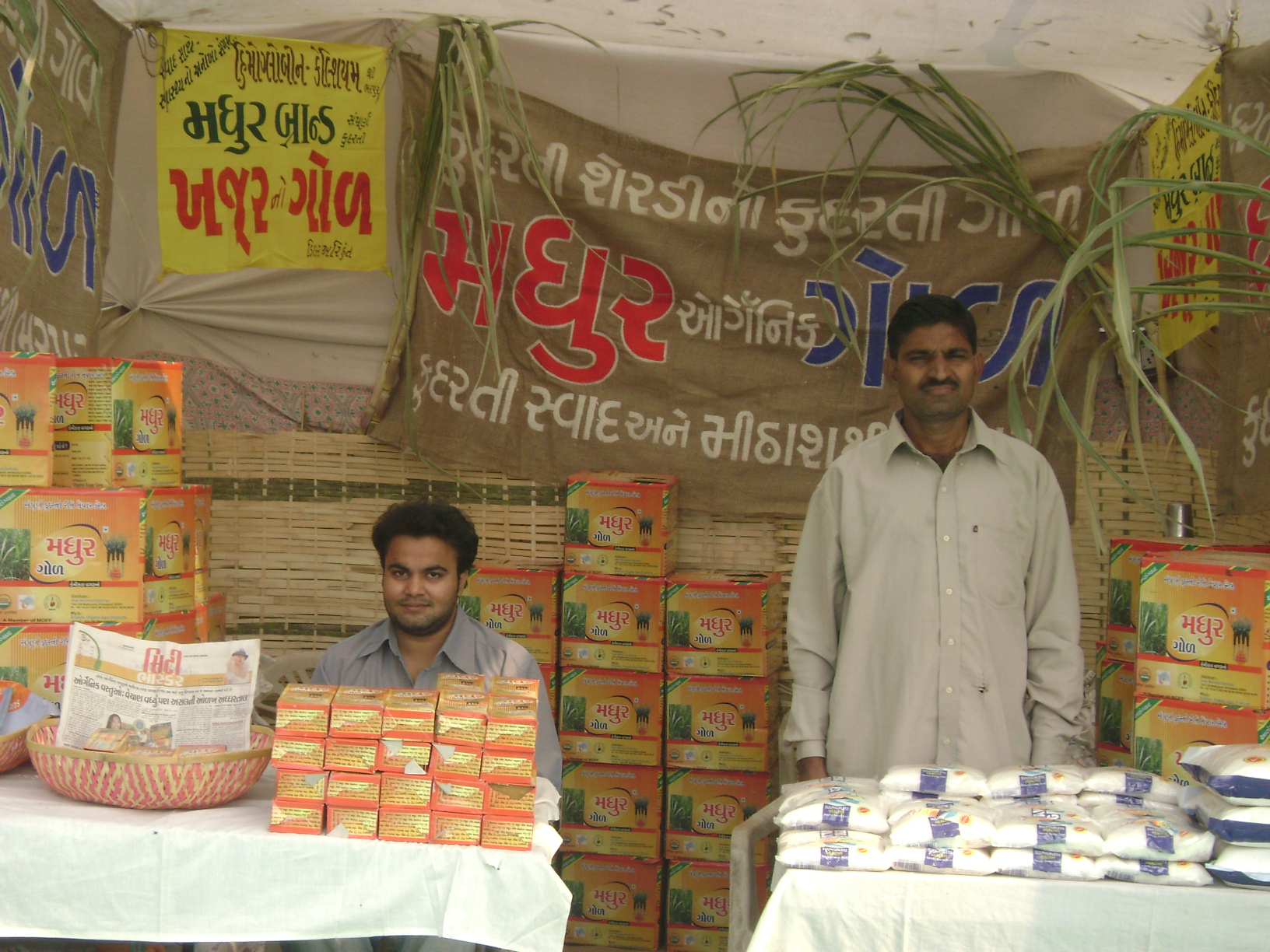
The Fifth Traditional Food Festival, Sattvik, was organized by SRISTI at IIMA campus during December 1-4, 2007 with the support of the Honey Bee Network, GIAN, NIF and IIMA. The Director of IIM, Prof Sameer Barua inaugurated the festival. Shri Ishwar Bhai, Founder Trustee of Gram Bharati, a Gandhian education institution at Amrapur and Gujarat Sarvodaya Mandal, appreciated the rich cultural and crop diversity in the country.
With thousands of varieties of rice and other crops, it offered a vast range of choices to people. He commended the effort of organizing Sattvik, which might help in conserving not just the diversity but also associated knowledge systems
Report
A new beginning
The Fifth Traditional Food Festival, Sattvik, was organized by SRISTI at IIMA campus during December 1-4, 2007 with the support of the Honey Bee Network, GIAN, NIF and IIMA. The Director of IIM, Prof Sameer Barua inaugurated the festival. Shri Ishwar Bhai, Founder Trustee of Gram Bharati, a Gandhian education institution at Amrapur and Gujarat Sarvodaya Mandal, appreciated the rich cultural and crop diversity in the country. With thousands of varieties of rice and other crops, it offered a vast range of choices to people. He commended the effort of organizing Sattvik, which might help in conserving not just the diversity but also associated knowledge systems.
Shri Sukhdevbhai of Ganatar took special effort to educate the visitors through his volunteers about the initiatives for making children more responsible, socially conscious and more inclusive in their outlook.
Ganatar has provided immense support to the Honey Bee Network in scouting innovative practices from Gujarat. Sukhdevbhai’s student Vishnu Bachubhai Dumania is one such example. Vishnu could not study since most families in the salt manufacturing region required their children to monitor the water levels in the water pumping tanks. Vishnu had received an award from Dr R A Mashelkar, Chairperson, National Innovation Foundation for his innovative water level indication system at the 4th biennial awards at NIF.
We hope similar organizations will help disseminate this message of the Honey Bee Network so that we can reach out to many more Vishnus. Ganatar organised street plays and dances to convey the deeper messages about the relevant school education during the festival.
Tongue Tied, Recipe Ride!
On the afternoon of 30th November, 2007 a contest of lesser known traditional recipes was held at the IIM campus. Thirty five participants shared more than 110 recipes. Some of the uncommon recipes were healthy noodles made of “Ragi”, sherbet made of “Bili” fruit, Apple Wood (Aegle marmelos (L.) Correa), nectar of lemon-guava (Citrus limon L. and Psidium guajava L.), Shoe-flower (Hibiscus rosa-sinensis L.) juice, “Shankhpushpi” (Evolvulus alsinoides L.) juice, sweet kachori, stuffed pancake with “Kang”, Foxtail millet (Setaria italica (L.) Beauv.) dip, “Dodi” (Leptadenia reticulata Wt. & Arn.) mathiya, Jowar ( Sorghum bicolor (L.) Moench.)-apple pudding, sweet “Shingoda”, Water Chesnut (Trapa natans L.) and many more.
Prof (Smt) Ambarben Trivedi (Former Head of the Department, Food and Nutrition, B.D. Home Science College, Ahmedabad), Prof (Smt) Rekhaben Mehta (Head Department of Food & Nutrition) and Dr. Dharmishtha Gandhi (Asst. Professor, Dental College, Vadodara) evaluated the recipes.
Ms. Ranjanben Shah received the 1st prize for her five recipes, healthy noodles, “Jowar”, (Sorghum bicolor (L.)Moench)raab,“Chil” (Chenopodium album L.) & “Dudhi” (Leptadenia reticulata Wt. & Arn.) muthiya, “Bili” (Aegle marmelos (L.) Correa)juice,“Shankhpushpi” (Evolvulus alsinoides L.)
juice. Ms Meenaben S. Trivedi received the 2nd prize for her recipes, “Dodi” muthiya, juice of ginger (Zingiber officinale Rosc.), lemon (Citrus limon L.), “Amla” (Emblica officinalis Gaertn.), “Pudina” (Mentha arvenses L.), and “Tulsi” (Ocimum sanctum L.), chutney of “Amli-khajur” and gur (jaggery) (Tamarindus indica L. and Phoenix dactylifera L.) (that can be stored for one year). Mrs. Ekta Parekh received the 3rd prize for stuffed Pancake with “Kang”, Foxtail millet (Setaria italica (L.) Beauv.) dip (a low calorie dish). In addition, ten contestants received consolation prizes.
Potpourri in Hot Pots!
Though the participation from Gujarat was understandably large, people from far off places like Kashmir, Himachal Pradesh, Nagaland, Uttar Pradesh, West Bengal, Assam, Tamil Nadu and Kerala had also put up their stalls. The festival truly maintained its diversity by offering not just readymade organic products and dishes made of them, but also seedlings of “Ajma pan”, (Trachyspermum ammi L.), “Brahmi” (Centella asiatica (L.) urban), “Mamejavo” (Enicostemma littorale Bl.), “Dodi” (Leptadenia reticulata Wt. & Arn.), “Kuvarpathhu” (Aloe vera L.), “Limbdo” (Azadirachta indica Nees).
Organic food from Daanta Ramgarh, Shekhawati and Jodhpur, Rajasthan mobilized by the HBN innovator Mr Sundaram Verma was available. “Dal Baati” “Dahi Bade”, “Baajre ki Rabri”, choorma made of wheat flour (helps fight against cold) and onion kachori were quite popular among the visitors. One of the stall owners added that “the urban ways of making Baati using an oven makes it lose the original taste”. According to him their uniqueness lies in maintaining the age old process of making the dishes.
Sardar Patel farm participates in the festival every year. They came up with powedered “Chiku”, Sapota ( Achras sapota L.), Amla ( Emblica officinalis Gaertn.) and lemon that can be used as instant add-ins for milk shakes and ice creams. They also offered ice-creams made from these powders, which attracted a huge crowd. Dr Dinesh Patel, a cardiologist took a break from his clinic only to be at the festival. The switch from being a doctor to a farmer came easy to him. He said, “I had created a fence around me that separated me from nature. I thought I could not wake up at seven in the morning to dig soil. When I put my foot out, I saw unlimited opportunities”. He touched upon the importance of certification in the acceptance of organic products among the public. “When we started, I thought if I am practicing organic farming, I will need no certification from people for I know my products are authentic. But now I have realized that I may believe in my products, but it is important for people to see a third party confirming these products as genuine” said Dr Patel whose farm has now obtained certification from India Organic, and other agencies. He added that though certification is a costly affair, small scale farmers can opt for a group certification and practice organic farming.
People from Chamba and Kangra, Himachal Pradesh had also put up their stall (mobilized by two NGOs, Era and Sewa Himalaya). Dr Arun Chandan explained that the “Rajma”, Kidney beans (Phaseolus vulgaris L.) and “Urd”, Black gram, (Vigna mungo L.) they had brought along was grown by the tribals and other farmers in the middle, upper-middle and alpine zones. The “Urd”, (Black gram) according to him not only takes less time to cook, but is also incomparable in taste. They had also brought jams, chutney and sherbet made of Rhododendron, which they claimed were highly recommended for cardiac patients. Rhododendrons are notable for their flowers lasting only for fifteen days after which they wither away. It is indeed a challenging task for farmers to gather these flowers within this time period and process them. Anoopbhai, a farmer mobilised local women in the area for picking these flowers and its sherbet besides plum jam and apple chutney.
Despite the fact that the production was low and the prices high, most of the products were sold on the first day itself. Chukh, a variety of pickle made with citrus juice, chillies, garlic and sugar used as a natural preservative was another unique item from Chamba. A special feature of this stall was the “Makki ka Atta” (Maize floor) they had brought. A local non-hybrid variety of Maize was ground by water mill. They had also aimed at a set of new dishes everyday with eleven recipes to offer. Notable amongst these was Bichoo booti (Urtica dioca L.) ka saag, which is good for arthritis and neurological disorders. They were also very keen on holding the festival at local level with support of the HBN.
Sahya, a womens’ association from Idduki District, Kerala mobilized by the Peermade Development Society with active support from NIF also participated for the first time in the festival. On display were food supplements made of jackfruit, and pickles made of grapes, pineapple and dates. All the products had their base in the Traditional Knowledge of women. Commercialization of their innovative products has led to the women earning additional monthly income of 1000-1500 rupees.
Health drinks like “Sehjan” (Moringa oleifera Lam.) Soup (helpful in arthritis) and sherbets made of Cactus fruit (Opuntia dillenii (Ker-Gawl.) Haw.), “Tulsi” (Ocimum sanctum Linn.) and Amla (Emblica officinalis Gaertn.) were also available apart from organic herbal tea, barley water, imported coffee from Philippines and the traditional “Kahewa”, the Kashmiri tea. The syrup of cactus fruit was a run away success. Khedut Haat had farmers from various regions selling seeds of cereals, herbs, oils, vegetables, millets, papad, jaggery and some herbal medicines.
Women from various districts in Gujarat, mobilized by Sewa Gram Mahila Haat also displayed their products at the Khedut Haat. Interesting products at their stall were the Ginger-Amla sherbet from Deopura village, Anand. All of this was sold on first day.
Mitticool, Maruti Jhoola and more...
An exhibition of innovations from different parts of the country was organized by NIF and GIAN on the occasion. We had a gas operated iron from Andhra Pradesh, side stand gear lock from Kerala, manual milking machine from Karnataka, Maruti Jhoola, earthen kitchen product range from Gujarat among many other things. Earthen product range like tawas, pots, mugs, fridge (Mitticool) were displayed by Shri Mansukhbhai Prajapati, an innovator from Wakaner, Gujarat.
Traditionally made and uniquely designed leather chappals by Bhaiyaram from Chattisgarh, small toys made from wires, cards and other stationary items made from flower pulp were other attractions.
Battery operated tricycle for handicapped people made by Shri Asjadbhai from Kayalpur, Banaskantha, Gujarat also received some rave reviews. It was an outstanding example of how a son who really cared, designed a tricycle to suit various needs of his aged father.
New Products at Display
Clay cooker by Shri Mansukhbhai Prajapati was launched on the first day along with the mobile water carrier and dispenser, ‘Ganges Water Wagon”, from the makers of Natural Water Cooler ‘Unicool’, M/s Rachna Industries and Shri Arvindbhai Patel, innovator. NIF-SRISTI also displayed their Shashvat range of neutraceutical products that included cactus fruit drink in two flavors,
“Moringa” (Moringa olifera Lam.) based health tonic, “Ragi” (Eleusine coracana (L.) Gaertn.) and Barley (Hordeum vulgare L.) enriched food supplements in three flavors, seven grain biscuits, biscuits to be had during fasting, “Kodri”, Kodo millet (Paspalum scrobiculatum L.) biscuits and herbal tea.
Once eaten, twice try!
A critical component of the food festival was to gather feedback from the visitor to constantly improve the festival. Shri Arun Kumar Agrawal, who had been to all the earlier festivals, cancelled his trip to Agra for this food festival. His wife who always buys organic food for home supported the cause of organic farming saying “ye do inch ki jeebh hoti hai na, yehi faisla karti hai ki andar kya jayega. Hum sirf swad ke liye khate hain aur galat khana khake jab bimar hote hain to wohi jeebh kadwi dawai to jhel jati hai, lekin agar kaho ki neem ka ras sehat ke liye accha hai to nahi maanti.”
(This tongue no matter how small, decides what goes in the stomach. We have a habit of eating for taste. On falling sick after eating improperly the same tongue that refuses to understand that Neem is good for health, takes in doses of bitter medicine)
Rameshbhai and Smt Tarulataben bought “Singdana”, Groundnut (Arachis hypogea L.), ‘Nibda” ka gado,”Nagli” ka aata (Eleusine coracana (L.) Gaertn.), and “Til” (Sesamum indicum L.) from the Khedut Haat. Despite realizing that the price of organic products was quite high as compared to the chemical input based products available in the market, an understanding of the authenticity of the products was enough for them to buy so much. They however felt that the Khedut Haat must be provided a bigger space and should be highlighted more.
The aura at the festival was suffused with mirth, laughter, noise, music, and voices of the multitudes. Some who rejoiced the dishes wanted to change their life styles but for many, it was just a happy diversion from every day routine.
Amanda from England liked the fact that she could get organic products in India. She said, “In England, I only use organic products, but in the last four months that I have been in India, it has been difficult for me to find non chemical input based products. Its encouraging seeing there is a market for organic products here”. She also suggested some of the banners be in English also so that people from other countries can enjoy the fare without having to deal with the language barrier. She expressed an interest in visiting the fair next year with a hope of seeing clothes made of organic fabrics. Shri M S Sudarshanan and Shri Ajay K Nair from IIMA said they would like to see more participation from the Southern states. They also suggested a digital display of the food items near the stalls so that the crowd at the stalls could be managed more effectively.
Children seemed more interested in persuading their parents to shift their current consumption style. Lack of a regular outlet of authentic organic choices was regretted by everybody. Unless farmers movement comes forward to develop a rigorous repeated and random inspection system so that authenticity can be assured, many consumers will remain unconvinced. The Network is pursuing this idea with its members and hopefully such a system of inspection will emerge in due course.
Unless we create markets of some of the fast disappearing crops and their varieties, their conservation will indeed become very difficult. Urban consumers have to join hands with rural producers and the Sattvik will continue to provide a platform for dialogue to take place. Dialogue on diversity has to sustain the confluence of creativity in cultural, culinary and consumption choices of consumers. (Honey Bee, 18(3) & 18(4):11-15, 2007).
Other report
FLIKR GALLERY


